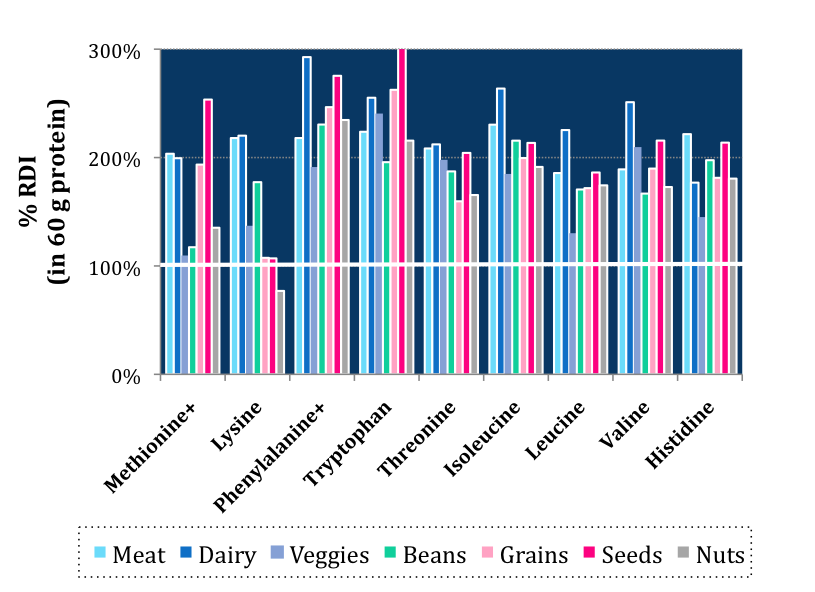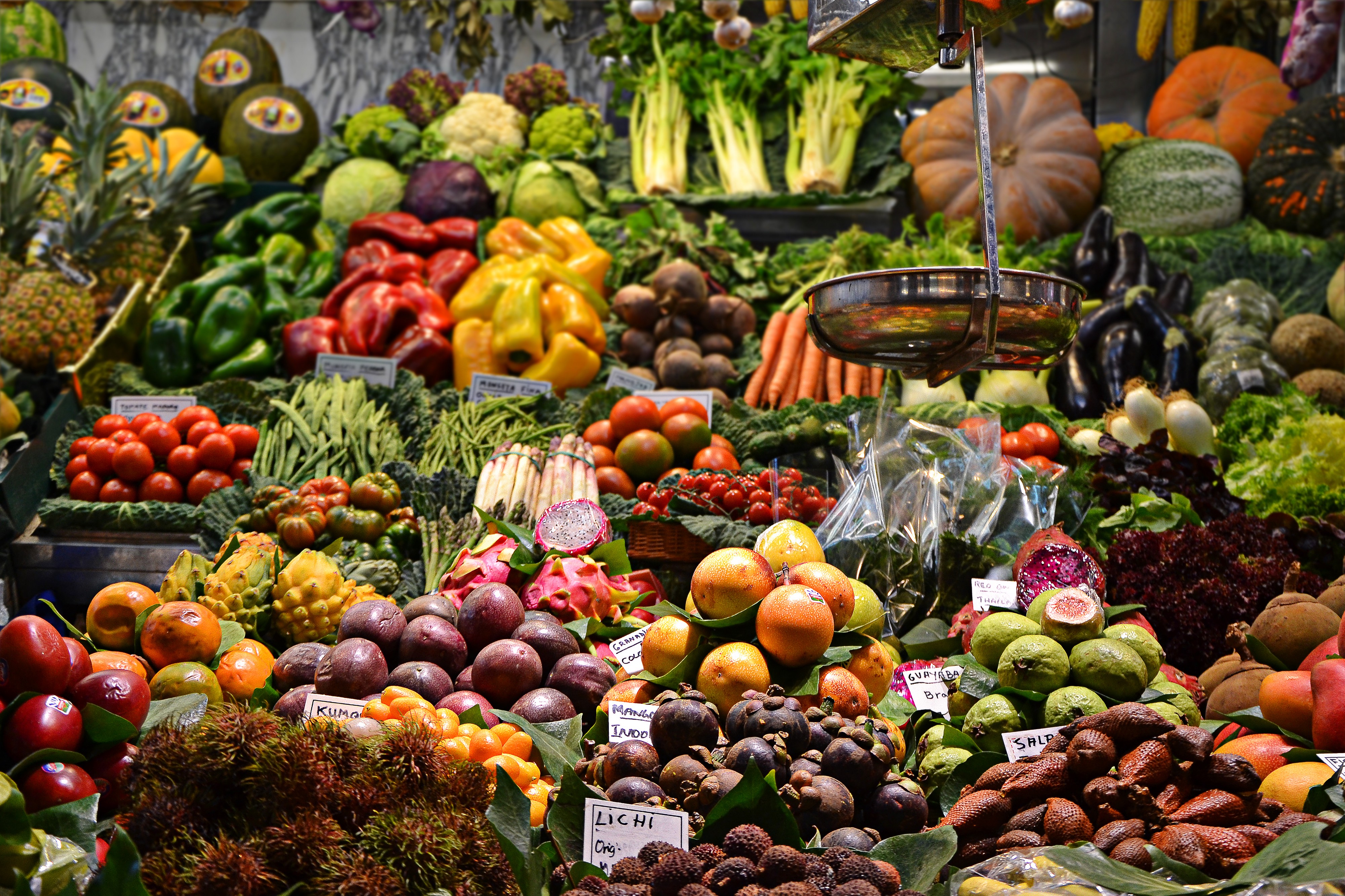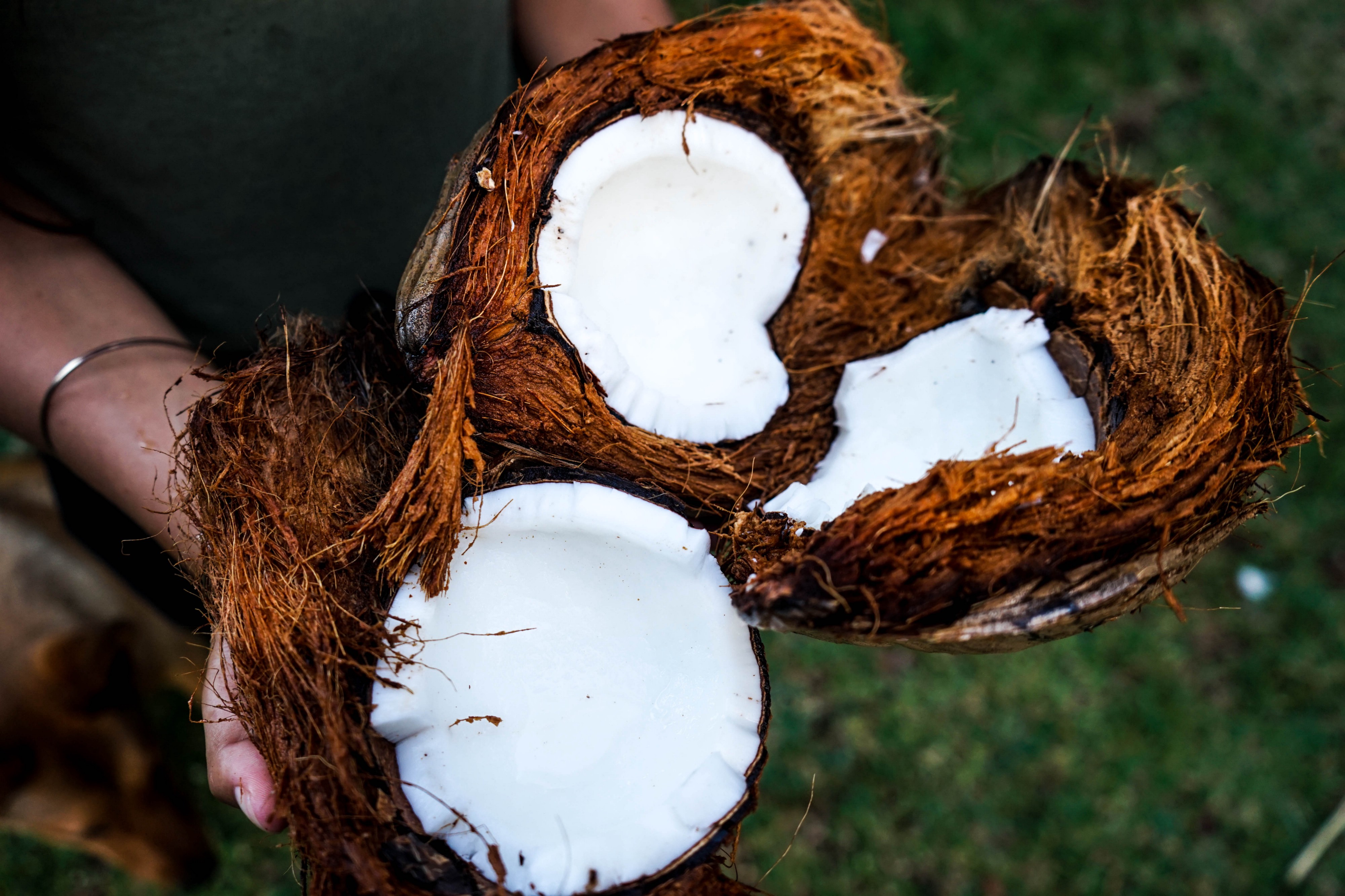Getting ?complete? proteins from plants is easier than you think
 Like unicorns, myths can live forever unless we find their Achilles heel. Credit: GDJ via Pixabay
Like unicorns, myths can live forever unless we find their Achilles heel. Credit: GDJ via Pixabay
If you think that you need to eat copious amounts of rice and beans to get ?complete? plant-based proteins, think again. Covering your essential amino acids from a plant-based diet is easier than you may think.
The widely held belief that plant-based proteins are ?incomplete? or ?missing? amino acids traces back to a 1971 book, Diet for a Small Planet by Frances Moore Lapp, who trumpeted the lower environmental toll of a plant-based diet. Lapp recommended ?protein complementing? ? strategically pairing plant proteins at each meal, in order to achieve a certain balance of amino acids. While there was a kernel of truth at the root of her advice, she was way off the mark in terms of what it takes to cover one?s amino acid needs.
In the tenth anniversary of her book (1981), Lapp retracted her emphasis on strategic food pairings and clarified the very limited scope of this concern.
?With three important exceptions, there is little danger of protein deficiency in a plant food diet. The exceptions are diets very heavily dependent on fruit, or on some tubers, such as sweet potatoes or cassava, or on junk food (refined flours, sugars, and fat). Fortunately, relatively few people in the world try to survive on diets in which these foods are virtually the sole source of calories. In all other diets, if people are getting enough calories, they are virtually certain of getting enough protein.?
This time, she hit the nail on the head, but the damage was done. The myth of incomplete plant-based proteins is incredibly sticky, and continues to thrive despite decades later, despite clear evidence to the contrary.
Indeed, it?s clear that something is amiss based purely on two basic tenets of biology:
- Plants use the same 20 amino acids as humans to build their proteins (the genetic code is universal).
- All animals ultimately get their protein from plants (or plant-like phytoplankton)? either directly or indirectly through the food chain.
To remove any lingering doubts, this article, looks at levels of the nine essential amino acids across a range of foods (plant-based, meats, and dairy) and ask whether or not they provide ?enough.?
The conclusions are clear: 1) it?s easy to meet your essential amino acid needs on a plant-based diet (without tons of rice and beans); 2) we need to rethink the way we talk about protein ?completeness.?
Calling plant-based proteins incomplete is like calling milk an ?incomplete? source of calcium because it takes more than one glass to meet your daily needs.
Note: Meeting your overall protein needs is a separate topic ? discussed here.
 Photo: Branden Harvey via Unsplash
Photo: Branden Harvey via Unsplash
Breaking news: Plant-based proteins are NOT missing any amino acids!
You read that right. The statement that all or most plant-based proteins are missing one or more amino acids is 100% false. All plants (and meats and dairy) contain at least moderate amounts of all nine essential amino acids.
The term ?incomplete? is trickier to define and analyze. Before we dig into the data, let?s get our definitions straight.
What is a complete protein?
Proteins are long chains of amino acids. Picture an alphabet bead necklace where each bead is an amino acid. Each protein is defined by its unique sequence of amino acids (beads).
In healthy adults, nine of the 20 amino acids are considered essential (also called indispensable). Your body cannot make them, so they must come from your diet. The other 11 key amino acids are considered ?non-essential,? as your body can make them. Some amino acids are ?conditionally? essential ? needed only in certain stages of life or for certain diseases.
A food (or combination of foods) is considered to be a complete protein source if it provides ?enough? of each of the nine essential amino acids.
This seemingly straightforward definition is actually very fuzzy. Whether or not a food provides ?enough? of any given amino acid depends on how you define ?enough? ? and on how much of it you consume.
Comparing plant and animal proteins at the amino acid level
How would different diets fare in a world where all our protein comes from powders (ugh!)? This thought experiment helps get to the heart of the matter.
I compared proteins from difference sources at the amino acid level (meat, dairy, beans, veggies, grains, nuts, or seeds). To make an apples-to-apples comparison, I looked at how much of each amino acid is in a day?s worth of protein (60 grams in my case).
My graph below shows the results for all nine essential amino acids, color-coded by protein source. The key is to look at the height of each bar relative to the 100% line, which marks your recommended daily intake. A bar height of 200% means the food provides twice your daily needs, whereas 50% would mean half of your daily needs.
 Each bar shows how much of a specific amino acid is found in a group of foods. A bar height of 100% means daily needs are met. See Appendix for more information.
Each bar shows how much of a specific amino acid is found in a group of foods. A bar height of 100% means daily needs are met. See Appendix for more information.
Key findings
 Photo: Pawe? Czerwi?ski via Unsplash
Photo: Pawe? Czerwi?ski via Unsplash
Green light:
- If you eat a mix of plants, you will get roughly twice as much as you need for seven of the nine essential amino acids. This assumes you get enough total protein.
- Meat and dairy protein provide roughly twice as much as you need for all nine essential amino acids.
Yellow light (caution):
- Lysine: If grains and seeds were your only source of protein, you would get just enough lysine, (about 105%).
- Methionine: If beans and veggies were your only source of protein, you would get just enough methionine (about 105%).
Red flag (watch out!):
- Lysine: If nuts were your only source of protein, you would likely fall just short on lysine (16% below your target). Not missing, but below 100%.
Is there truth behind the myth?
Many myths have at least a kernel of truth behind them and this one is no exception.
- Meeting your needs for all essential amino acids is essentially foolproof if you eat moderate amounts of meat or dairy.
- Meeting your needs for all essential amino acids on a plant-only diet is easy but not foolproof. This is because the ?weakest link? for plant-based proteins is weaker than the weakest link for dairy and meat proteins.
Let me elaborate:
- Dairy and meat have a ?weakest link? amino acid level that is twice your daily needs (in a day?s worth of protein). This means you can meet all your daily essential amino acid needs in only half a day?s worth of total protein ? or a single, large, protein heavy meal.
- Most individual plants (e.g., rice alone or black beans alone) have a ?weakest link? amino acid level just below or just 100%. Thus, if a single plant were your sole source of protein, you would need a full day?s worth of protein (and a full day?s worth of food) to meet your needs.
Putting this into practice, all it takes to meet your essential amino acid needs on a plant-based diet is follow two rules:
How to meet your essential amino acid needs on a plant-based diet
 Photo: ja ma via Unsplash
Photo: ja ma via Unsplash
- Eat enough protein.
- Know your needs and your sources. I eat ~1 gram of protein per kilogram of my weight. This is slightly more than the national guidelines, yet less than most North Americans. My results are based on this level of intake.
- Most whole plant-based foods have a decent protein content. Fruits (and oils) are exceptions.
2. Eat a variety of whole foods.
- Similar foods tend to have a common ?weakest link,? so eating a mix of veggies, beans, grains, nuts, and seeds helps them all cover for each other.
This familiar advice may sound boring, but it?s true ? and easy to follow.
The bottom line
 Photo: Jonas Dcker via Unsplash
Photo: Jonas Dcker via Unsplash
The myth of the incomplete plant-based protein may seem harmless, but it presents a false barrier to adopting a plant-forward diet and causes unnecessary stress. Meeting your essential amino acid needs with plants doesn?t have to mean endless servings of rice and beans.
At the root of the myth lies the way that we define ?complete? and ?enough.? To get a ?complete? protein, we need to get ?enough? of the nine essential amino acids, in one full day. Yet, we judge proteins as complete or not based on a single serving, not based on a day?s worth of protein.
As long as you?re eating enough total plant-based protein, and incorporating some diversity in your sources, you should be covering your essential amino acids. To fail, you?d need to either not eat enough protein, or eat a severely limited diet (such as only rice), neither of which is advised for many reasons.
This brings us full circle to my earlier assertion:
Calling plant-proteins ?incomplete? is like calling milk an incomplete source of calcium because it takes more than one glass to meet your daily needs!
 Photo: braetschit via Pixabay
Photo: braetschit via Pixabay
Nerd Note: When your body makes a new protein, it uses building blocks (amino acids) both from your latest meal AND from your reservoir ?pool.? This pool comes from the natural process of amino acid recycling in your body. (Learn More.)
Call to action: Choose your words carefully
 Photo: rawpixel via Unsplash
Photo: rawpixel via Unsplash
Deeply rooted beliefs are hard to displace. I?m not the first scientist to raise a red flag regarding the misrepresentation of plant-based proteins (see, for instance, this 1992 exchange between physician-scientist Dr. John McDougall and the American Heart Association), and I won?t be the last.
Let?s work together to tighten up our language, so that this myth will go the way of the dodo bird!
1. Stop saying that plants are ?missing? amino acids. This is completely false. The word ?missing? implies zero or very low, whereas all plants use all 20 amino acids ? in at least moderate amounts.
2. Consider using the word ?limiting? to clarify which amino acid is the weakest link.
3. Be careful and clear when using the word ?complete? or ?incomplete? to describe a protein. We should be thinking about a day?s intake rather than a single serving. It is not necessary to meet your daily needs at every meal.
Learn more
- How much protein do I need? Is more better? Can I get enough protein on a plant-based diet?
- Is soy safe?
- Learn more about the lifecycle of proteins in your body in my Protein Biology 1 & Protein Biology 2.
- Learn more and subscribe at Fueled by Science.
The information provided here should not be viewed as medical advice. Consult your physician if you have nutritional concerns.
Appendix: Gory details and FAQs
Caveats
- I have not incorporated amino acid digestibility. This tends to be lower for plant-based foods relative to animal foods but the difference is not enough to change the basic message.
- RDI results shown are averages (medians) by food group. I chose four to seven foods per category. Some foods will be lower than the average by food group.
- RDI results will vary depending on which foods are chosen to represent each category. I tried to choose popular items.
- Amino acid needs can vary between individuals by age and health status. I have used standard needs for healthy adults.
How did you calculate % RDI (Recommended Daily Intake)?
Step 1: Calculate your recommended daily intakes (RDI)
- RDI were based on the World Health Organization and the Institute of Medicine. When the two recommendations differed, I chose the higher number. Actual figures shown further below.
Step 2: Look up the essential amino acid content of foods of interest
- Source: USDA Food Composition Database ? Try it!
Step 3: Calculate how well each food meets my RDI for each of the nine amino acids
- % RDI = amino acid content of food / RDI for amino acid
Which foods were included? How were they chosen?
For meats and dairy, I chose popular foods that span range of fat content. For plants, I chose popular foods and biased towards foods I eat.
- Meats: Steak, Ground beef, Chicken, Salmon, Bacon
- Dairy: Eggs, 1% Milk, Yogurt, Cheddar Cheese, Cream Cheese
- Veggies: Spinach , Kale, Broccoli, Cauliflower, Celery, Potato, Carrot
- Beans: Tofu, Edamame, Black Beans, Chickpeas, Lentils, Peas
- Seeds: Hemp Seeds, Sunflower Seeds, Sesame Seeds, Pumpkin Seeds
- Grains: Quinoa Oats, Whole Wheat, Pasta, Brown Rice
- Nuts: Peanut Butter, Almonds, Walnuts, Cashews
What RDIs were used?
Here are my recommended DAILY intakes for all nine essential amino acids.
- They range from 5 mg/kilogram per day (tryptophan) to 42 mg/kilogram per day (leucine).
- I calculated my needs by taking the RDI Factor and multiplying by 60 kilograms (132 pounds).
- Note that the daily RDI factors shown here only apply to healthy adults.
RDA (mg per kilogram)
- Methionine+: 19
- Lysine: 38
- Phenylalanine+: 33
- Tryptophan: 5
- Threonine: 20
- Isoleucine: 20
- Leucine: 42
- Valine: 26
- Histidine: 14
Note: *RDIs for some amino acids are given as combinations of two amino acids (essential plus non-essential). Methionine+ represents Methionine + Cysteine (the two sulfur containing AAs); Phenylalanine+ represents Phenylalanine + Tyrosine (both aromatic AAs).
Why did you choose 60 grams of protein?
I wanted to be both realistic and conservative. I based my analysis on the amount of protein I typically eat as part of my plant-based diet ? 60 grams. This is about 1 gram per kilogram of my weight (I weigh 60 kilograms) and is slightly above the standard recommendation of 0.8 grams of protein per kilogram. Most people eat more than this!

